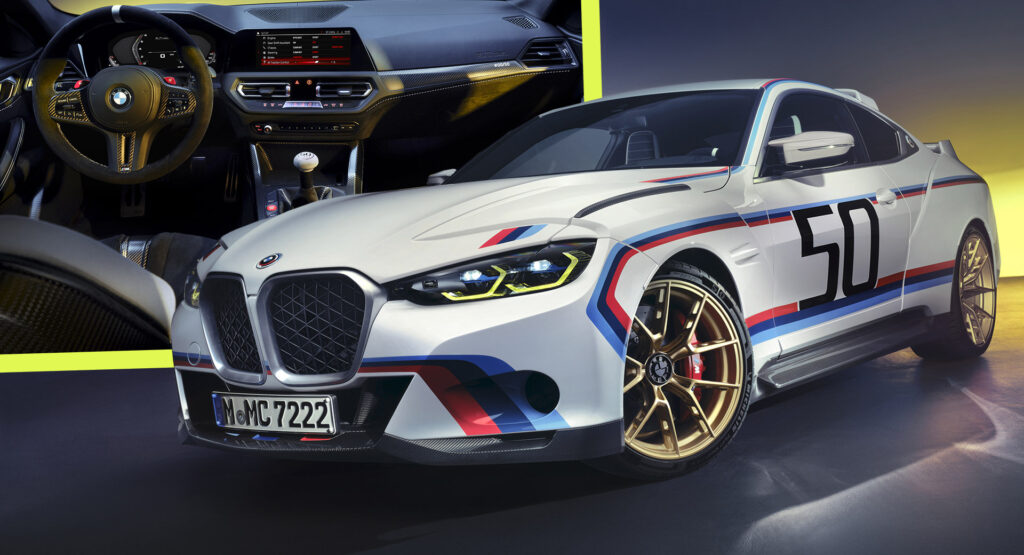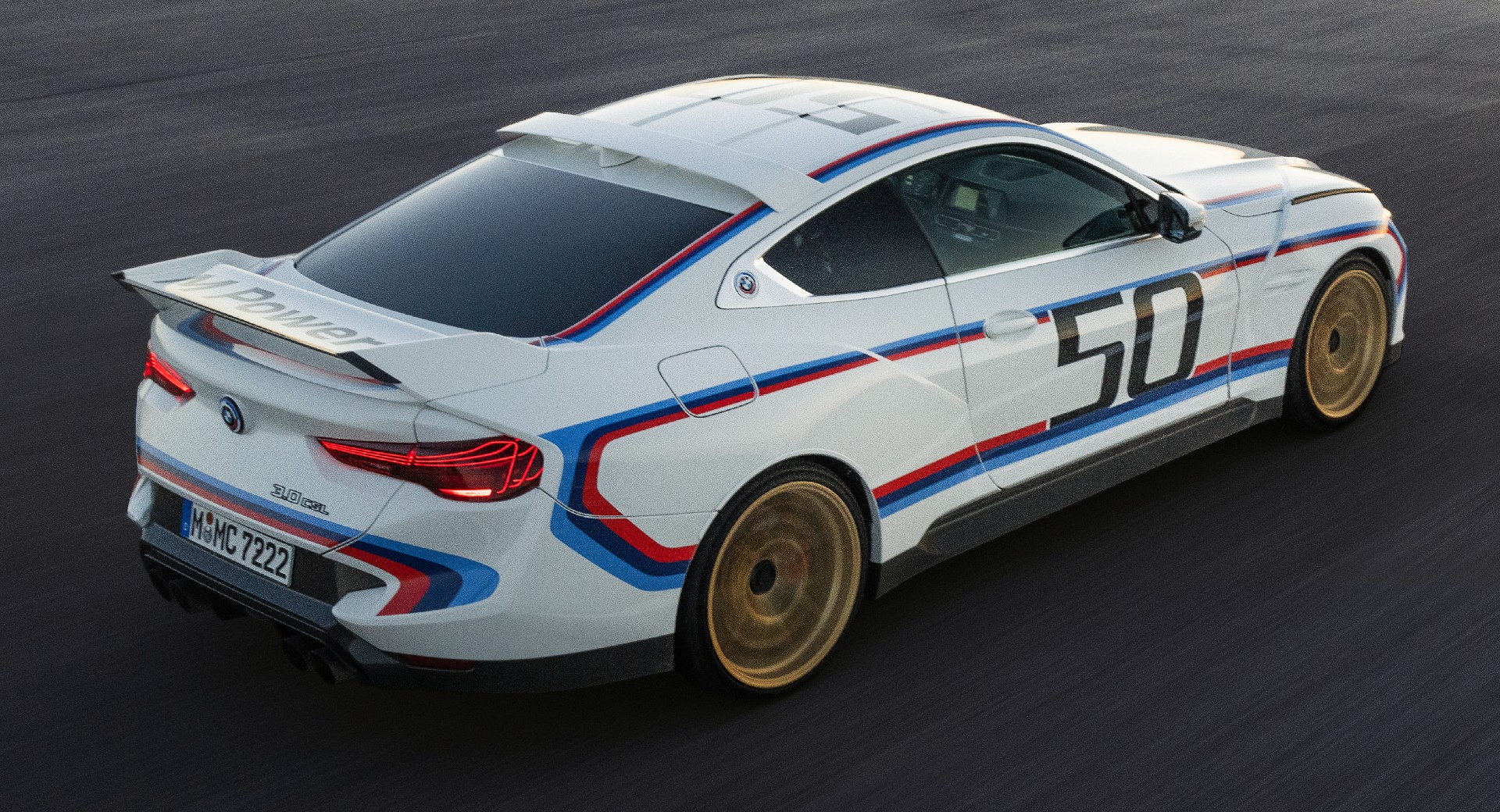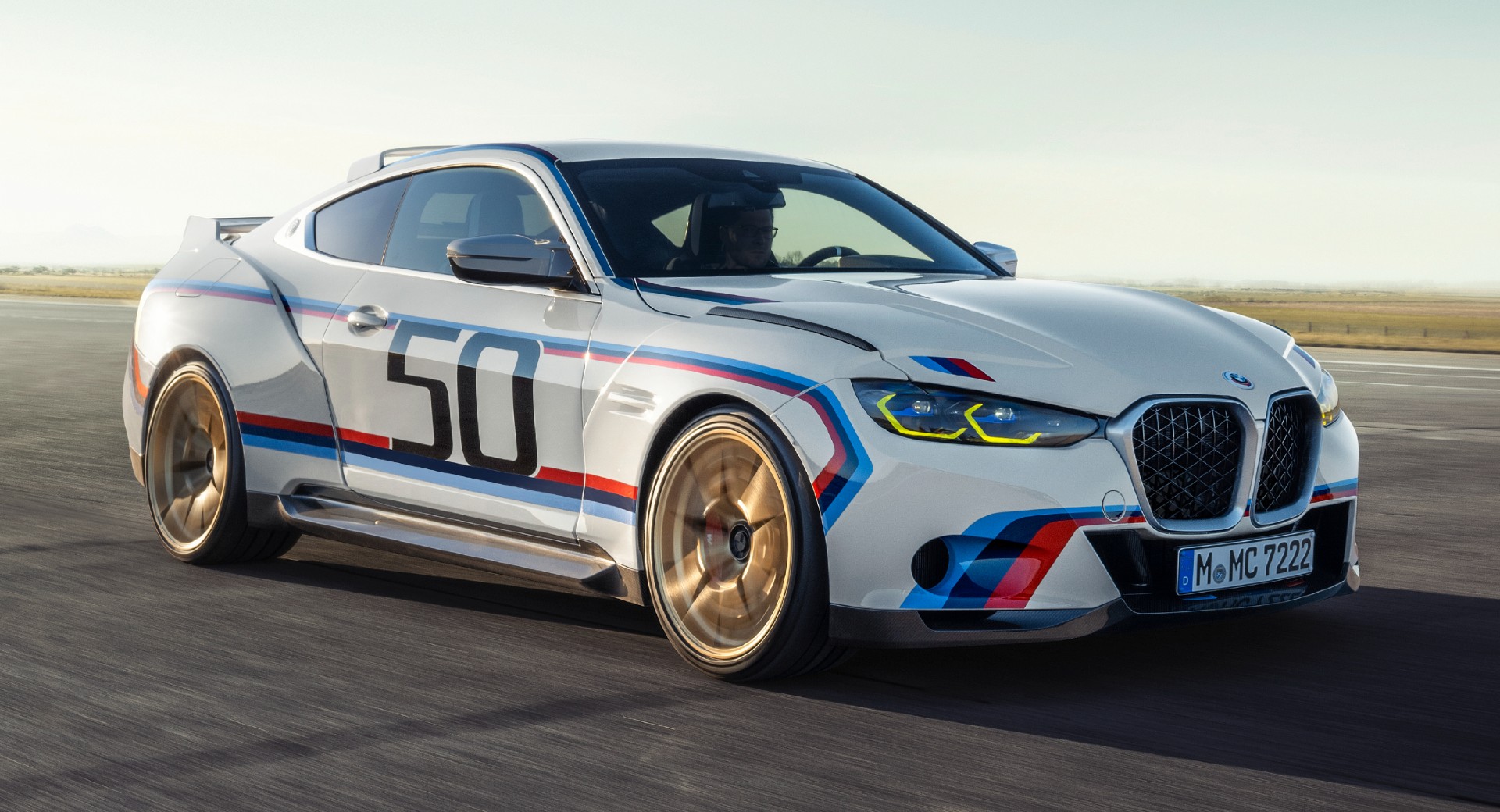
BMW has finally unveiled the much-anticipated modern-day 3.0 CSL, a limited-production model based on the M4 featuring a fully redesigned body inspired by the ’70s original. The swan song of the celebrations for BMW M’s 50th anniversary, it will be produced in 50 numbered units. The 3.0 CSL is considerably lighter than any M4 and comes fitted with the most powerful six-cylinder engine in the Bavarian automaker’s history delivering 553 hp (412 kW / 560 hp) mated to a manual gearbox.
Predictably, the model follows the theme of the gorgeous 2015 BMW 3.0 CSL Hommage Concept, although the design has been toned down for production while retaining the M4’s hard points.
Read: 2023 BMW M4 CSL Is A Track-Inspired, Carbon Fiber Clad Rocket Ship Starting At $139,900
The yellow-themed headlights and the laser taillights are sourced from the M4 CSL, but they look different, being partially covered by the signature bulged front and rear fenders. The controversial grille of the new M3/M4 is gone, replaced by more stylish kidneys finished in aluminum. This material has been used for the doors, bonnet, and trunk. There is also extensive use of carbon fiber reinforced plastic (CFRP) components on all bodywork sections, while the rear silencer is made of titanium.
The most striking feature of the design is probably the large rear wing and the additional roof-mounted spoiler that hark back to the E9 3.0 CSL “Batmobile”. BMW designers also added a pronounced Hofmeister kink. The beautiful racing livery with BMW M graphics on the Alpine white shade requires a special paint process adding an extra 6,700 manual work hours in production. Finally, the contrasting gold-finished alloy wheels measuring 20 inches at the front and 21 inches at the back are shod in bespoke Michelin tires.
The interior is derived from the M3/M4 but here it is bathed in Black Alcantara upholstery and carbon fiber accents with a matte finish. The rear bench is gone, replaced by a storage compartment with dedicated space for two helmets. The standard M Carbon full bucket seats have the 3.0 CSL emblem engraved into aluminum plates below the headrest inserts, while the numbering of each unit is visible on the dashboard. For weight-saving reasons, BMW reduced the acoustic insulation and added CFRP trim in the door panels, although the digital cockpit is retained. Another special touch is the retro-flavored white gearshift knob of the manual gearbox.
More Power, Less Weight
Under the bonnet of the 3.0 CSL lies the most powerful version of BMW’s twin-turbo 3.0-liter inline-six engine ever, producing 553 hp (412 kW / 560 PS) and 550 Nm (405.6 lb-ft) of torque. This represents an increase of 9 hp (7 kW / 10 PS) compared to the M4 CSL, but a significant 100 Nm (73 lb-ft) drop in torque due to the restrictions of the manual gearbox.
Speaking of which, in the 3.0 CSL power is transmitted to the rear axle exclusively through a six-speed manual gearbox with the help of the Active M Differential. The chassis has also been tuned with the Adaptive M Suspension and standard M carbon ceramic brakes representing the latest advancements in BMW’s technology.
Honoring the “Coupé, Sport, Leichtbau” (Coupe, Sport, Lightweight) badge, the 3.0 CSL tips the scales at 1,270 kg (2,800 pounds). This is 355 kg (782 pounds) less than the M4 CSL, and a full 455 kg (1,003 pounds) below the M4 Competition, vastly improving the power-to-weight ratio. BMW didn’t announce performance figures although it should be notably faster than the M4 on which it is based.
The entire 50-vehicle production run of the BMW 3.0 CSL will take around three months. Pricing for the special model hasn’t been disclosed, although judging from the time and effort required for each one to leave the factory we are expecting it to be the most expensive BMW offering by a large margin.


















































